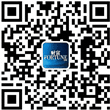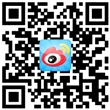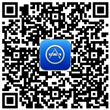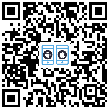2014年为什么还不是可穿戴设备年



|
????早在2008年,从测量心率到根据用户情绪播放音乐等的一系列可穿戴技术就已经被吹捧为消费电子产品的下一个重要契机了。 ????紧随Fitbit和谷歌眼镜(Google Glass)之后,许多公司开始蜂拥进入这一市场,带来了许多装有感应器的臂章、服饰以及眼镜。这个领域现在炙手可热,但最早使用这些设备的人们似乎都在等待那个时刻,让他们不再显得特立独行。(你知道的,谷歌眼镜的粉丝们现在有了个专门的贬义称呼“Glasshole”。) ????尽管谷歌已经竭尽所能,那一刻却依然还未到来。许多报告都声称,可穿戴设备将在2014年成为主流。不过来自数字研究公司L2的最新报告证实了许多人正在默默为之努力的一件事:可穿戴设备仍然没有得到社会的广泛接受,要扩大销量依旧障碍重重。 ????调查显示,75%的顾客都知道可穿戴技术(无论是作为前卫的时尚潮流,还是新时代的技术工具),但是只有9%的顾客有兴趣使用它们。根据调查,仅有2%的人表示自己拥有可穿戴设备,其中大部分都是健身追踪器或智能手表。 ????可穿戴设备通常分为三大类:像健身追踪器这样的复杂设备;像智能手表这样的智能配件(由于它们可以运行第三方应用);还有像谷歌眼镜这样完全自主、可以直接联网的智能可穿戴设备。 ????人们对于可穿戴设备销量的估计各不相同。研究公司IDC认为,这类设备今年的销量将超过1,900万件量,达到去年的三倍以上。到2018年,它的销量将会达到1.119亿件。瑞士信贷(Credit Suisse)预计,在接下来的2-4年中,这个行业的价值将会高达300亿至500亿美元。不过,在这一切实现之前,这个方兴未艾的市场需要摆脱人们对于“穿戴这种设备就是出丑”的成见。 ????今年六月,谷歌宣布与时尚设计师黛安?冯?芙丝汀宝合作,携手推出新款谷歌眼镜。这个举措凸显了硅谷当下的策略:招募时尚精英,赋予可穿戴设备以时尚内涵。 ????这个系列的特制镜框和太阳墨镜以“DVF|为谷歌眼镜设计”为标签,价格高达1,600美元以上。迄今为止,谷歌已经和雷朋(Ray-Ban)眼镜的生产商陆逊梯卡(Luxottica)以及其他几家提供时尚眼镜的公司如普拉达(Prada)等展开过合作。它还招募了曾在艺术网站Art.com担任首席市场官的时尚总监艾维?罗斯来领导谷歌眼镜团队。 ????在牵手其他领域的精英这一点上,谷歌并非独家。今年早些时候,英特尔(Intel)便宣布与美国时尚设计师协会(Council of Fashion Designers of America,CFDA)和奢侈品零售商Opening Ceremony合作,设计智能手镯。时尚品牌汤丽柏琦(Tory Burch)也与Fitbit携手设计了与可穿戴技术创业公司Misfit Wearables的无线运动跟踪器Shine Tracker类似的吊坠与手镯。而苹果(Apple)也发掘了各行各业的人才,包括博柏利(Burberry)前任首席执行官安吉拉?阿伦德茨(担任零售主管)、伊夫?圣?洛朗(Yves Saint Laurent)前任首席执行官保罗?丹尼佛以及耐克(Nike)的前任设计主管本?谢弗。 |
????As early as 2008, wearable technology—which can range in anything from measuring your heart rate to curating music based on your mood—has been touted as the next big moment in consumer electronics. ????In the wake of the Fitbit and Google’s GOOG 0.26% Glass, a flurry of companies has flooded the market with iterations of sensor-laden armbands, apparel, and eyewear. It’s a buzzy category, but early adopters seem to be waiting for a moment when they are no longerthat guy. (You know. The “Glasshole.”) ????But that moment, try as Google might, has yet to come. Some reports have named 2014 as the year when wearable devices will hit the mainstream, but a newer study from L2, a digital research firm, confirms what many have been quietly fighting for: wearables are still not socially acceptable, creating a significant hurdle to further sales. ????According to the study, 75% of consumers are aware of wearable technology (whether as futuristic fashion or new-age tech tool), but only 9% actually have any interest in wearing it. A meager 2% admitted to owning a wearable tech device, most of which consist of fitness trackers and smart watches, according to the study. ????Wearables typically fall into three categories: complex devices such as fitness trackers; smart accessories such as smart watches, defined by their ability to run third-party applications; and fully autonomous smart wearables that connect directly to the Internet, such as Google’s Glass headset. ????Estimates vary, but the research firm IDC projects that wearable tech will exceed 19 million units this year—more than triple last year’s sales—and will soar to 111.9 million units by 2018. Credit Suisse values the industry at somewhere between $30 billion and $50 billion in the next two to four years. But before that happens, the nascent market has that pesky wouldn’t-be-caught-dead-wearing-it hurdle to clear. ????The June announcement of collaboration between Google and fashion designer Diane von Furstenberg to create a new line of Google Glass underscored Silicon Valley’s current strategy to enlist the fashion elite to sanction wearables as de rigueur. ????The line of prescriptive frames and sunglasses, named “DVF | Made for Glass,” costs upwards of $1,600. Google has already partnered with Luxottica, the eyewear conglomerate behind Ray-Ban and several high-fashion eyewear offerings such as Prada. It also hired fashion executive Ivy Ross, most recently the chief marketing officer of Art.com, to lead its Glass team. ????The company is hardly alone in its efforts to woo talent of a different sort. Earlier this year Intel announced a collaboration with the Council of Fashion Designers of America, or CFDA, kicking off a partnership with the high-concept retailer Opening Ceremony to design its smart bracelet. Tory Burch partnered with Fitbit to design pendants and bracelets akin to the Shine Tracker by Misfit Wearables. And Apple AAPL -1.03% has tapped a diverse group of people, including former Burberry chief executive Angela Ahrendts (to lead its retail efforts), former Yves Saint Laurent CEO Paul Deneve, and former Nike NKE -0.71% design director Ben Shaffer. |
最新文章




